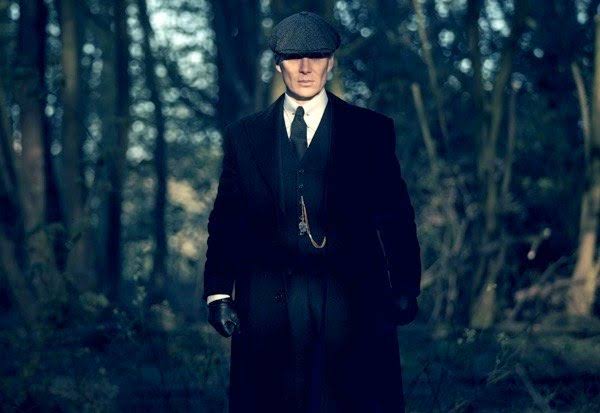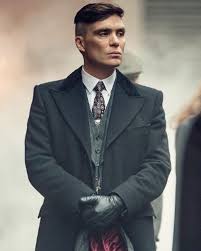
Thomas Shelby’s Iconic Style: Unraveling the Sophistication
Introduction:
In the gritty, enigmatic world of “Peaky Blinders,” one character stands out not just for his cunning mind but also for his impeccable sense of style – Thomas Shelby. Portrayed by the talented Cillian Murphy, Thomas Shelby’s character has become synonymous with an aura of sophistication and power. His distinct fashion sense, marked by sharp tailoring, dapper suits, and iconic accessories, has captivated audiences worldwide. Let’s delve into the nuances of Thomas Shelby’s style, dissecting its elements and unraveling the secrets behind its enduring appeal.
Thomas Shelby: A Man of Style and Substance:
Thomas Shelby, the central figure in “Peaky Blinders,” is a complex character who exudes confidence and charisma. His style reflects not only his status as the head of the Shelby crime family but also his keen attention to detail and penchant for making a statement. From the streets of Birmingham to the corridors of power, Thomas Shelby’s wardrobe serves as a visual representation of his journey and evolution throughout the series.
The Signature Look:
At the heart of Thomas Shelby’s style lies his signature look – the tailored suit. In every scene, he is seen impeccably dressed, with each garment meticulously chosen to convey authority and refinement. The suits, often in shades of gray, navy, or black, feature structured shoulders, narrow lapels, and perfectly tapered trousers, accentuating Murphy’s lean physique. This attention to fit and silhouette emphasizes Shelby’s stature and presence, whether he’s orchestrating a business deal or engaging in a tense standoff.

Figure 1: A still of Thomas Shelby in one of his iconic tailored suits, exuding confidence and power.
Accessorizing with Impact:
While the suit forms the foundation of Thomas Shelby’s wardrobe, it’s the accessories that elevate his look from ordinary to extraordinary. From the outset, one cannot ignore the razor-sharp peak cap, a nod to the infamous Peaky Blinders gang from which Shelby hails. This distinctive headwear not only adds a touch of historical authenticity but also serves as a symbol of authority and allegiance.
The Shelby Overcoat:
No discussion of Thomas Shelby’s style would be complete without mentioning the iconic overcoat. Draped over his shoulders with effortless swagger, the overcoat is a key component of his ensemble, especially in the chilly streets of post-war Birmingham. Crafted from luxurious fabrics like wool or tweed, and often adorned with a velvet collar, the overcoat exudes elegance and understated luxury. Its tailored silhouette and structured shoulders further enhance Shelby’s commanding presence, making it a quintessential piece in his sartorial arsenal.

Figure 2: Thomas Shelby donning his signature overcoat.
The Power of Peaky Blinders Fashion:
Thomas Shelby’s style extends beyond mere clothing; it embodies a distinct aesthetic that has captured the imagination of fans and fashion enthusiasts alike. The fusion of historical accuracy with modern elegance creates a timeless allure that transcends trends and resonates with audiences of all generations. As the face of “Peaky Blinders,” Shelby’s fashion choices have influenced a resurgence of interest in vintage menswear, sparking a revival of classic tailoring and accessories.
The Influence of Historical Context:
Set in the aftermath of World War I, “Peaky Blinders” provides a rich tapestry of historical context that informs Thomas Shelby’s style. The post-war era witnessed a shift in menswear, with a move towards more streamlined silhouettes and understated elegance. Shelby’s wardrobe reflects this transition, blending elements of Edwardian tailoring with a contemporary sensibility. The result is a distinctive look that pays homage to the past while remaining relevant in the present day.
Craftsmanship and Quality:
Central to Thomas Shelby’s style ethos is an emphasis on craftsmanship and quality. From the bespoke suits tailored to perfection to the handcrafted accessories that adorn his ensemble, every aspect of his wardrobe exudes a sense of luxury and refinement. This commitment to superior craftsmanship not only enhances the visual impact of his attire but also speaks to Shelby’s discerning taste and attention to detail.


Figure 3: Tommy Shelby in his iconic tailored suit.
The Evolution of Thomas Shelby’s Style:
Throughout the seasons of “Peaky Blinders,” Thomas Shelby’s style undergoes subtle yet significant transformations, mirroring his character’s evolution and the changing dynamics of the world around him. In the early seasons, his wardrobe is characterized by practicality and functionality, reflective of his roots in the working-class streets of Birmingham. As the series progresses and Shelby ascends to greater heights of power and influence, his style becomes more refined and sophisticated, mirroring his ascent into the upper echelons of society.
Incorporating Symbolism:
Beyond its aesthetic appeal, Thomas Shelby’s style is rich in symbolism, with each garment and accessory imbued with deeper meaning and significance. Take, for example, the iconic pocket watch that Shelby inherits from his father. More than just a timekeeping device, the pocket watch serves as a tangible link to Shelby’s past, grounding him in his heritage and providing a sense of continuity amidst the chaos of his present-day life. Similarly, the gold signet ring that adorns his finger is not merely a piece of jewelry but a symbol of his authority and lineage, signifying his status as a leader within the Shelby family.

Figure 4: A close-up shot of Thomas Shelby’s pocket watch, juxtaposed against the backdrop of his tailored suit, highlighting the symbolism inherent in his accessories.
The Influence of Geography:
As the narrative of “Peaky Blinders” expands beyond the confines of Birmingham, so too does Thomas Shelby’s style evolve to reflect the influence of different cultures and locales. In the later seasons, as Shelby’s business ventures take him to London and beyond, his wardrobe adopts a more cosmopolitan flair, incorporating elements of metropolitan fashion while retaining its signature elegance and sophistication. This juxtaposition of urban edge with timeless refinement further underscores Shelby’s status as a man of influence and intrigue.
Embracing Individuality:
At its core, Thomas Shelby’s style is a reflection of his fiercely independent spirit and unwavering self-assurance. Unlike his contemporaries who may conform to societal norms or trends, Shelby dresses according to his own dictates, unapologetically embracing his individuality and standing apart from the crowd. Whether it’s the distinctive peaked cap or the tailored three-piece suit, each aspect of his attire is a deliberate choice, a statement of his identity and a testament to his refusal to be bound by convention.
The Enduring Legacy of Thomas Shelby’s Style:
As “Peaky Blinders” draws to a close, the legacy of Thomas Shelby’s style will undoubtedly endure, leaving an indelible mark on popular culture and fashion. His timeless elegance and understated sophistication serve as a reminder that true style transcends fleeting trends and fads, rooted instead in authenticity, craftsmanship, and self-assurance. Whether on-screen or off, Thomas Shelby will forever remain an icon of sartorial excellence, his influence continuing to inspire generations to come.
Parting Thoughts:
In the world of “Peaky Blinders,” where power is won through wit and strategy, Thomas Shelby’s style serves as a potent weapon, commanding respect and admiration in equal measure. From the tailored suits to the iconic accessories, every aspect of his wardrobe is a reflection of his character – complex, enigmatic, and utterly captivating. As we bid farewell to this legendary character, let us not only celebrate his triumphs and tribulations but also pay homage to his enduring legacy as a true style icon of our time.
Photo suggestion: An atmospheric shot capturing Thomas Shelby in a contemplative moment, his silhouette framed against the backdrop of the sprawling Birmingham skyline, a visual testament to his enduring presence in the cultural landscape.
Peaky Blinders Season 7 or a new movie?
Peaky Blinders is set to be returning with a movie instead of a season which is confirmed by Steven Knights. The production is set to begin in September 2024 based on the second world war ambience.
So, Cillian Murphy is going to return with the essence of second world war and all his accessories including his weapons will have the essence of 1939 to 1945. So, we can hope to see a Tommy Shelby of those fearful days depicting the style and fashion of the second world war.
Conclusion:
In the realm of television’s most captivating characters, Thomas Shelby stands tall not just for his cunning intellect and strategic prowess but also for his impeccable sense of style. From the tailored suits to the iconic accessories, every aspect of his wardrobe is a testament to his status as a true fashion icon. As we bid farewell to “Peaky Blinders” and its indelible cast of characters, let us take a moment to salute Thomas Shelby – the man, the myth, the sartorial legend.
We also have covered another significant character of Peaky Blinders- our Aunt Polly! Go here to read this premium content asap!
You can also read:
Unveiling the Timeless Elegance of Cillian Murphy’s Style
Hermione’s Style: Timeless Elegance and Intelligence
Harry Potter’s Style: From the Boy Who Lived to a Fashion Icon
Benedict Cumberbatch: The Epitome of Timeless Style
Achilles Dress Style: A Timeless Symbol of Strength and Elegance
Brad Pitt’s Style: Unlocking the Timeless Elegance
You can write to us at fashionnovationfd@gmail.com
We read and publish your well-written articles!
